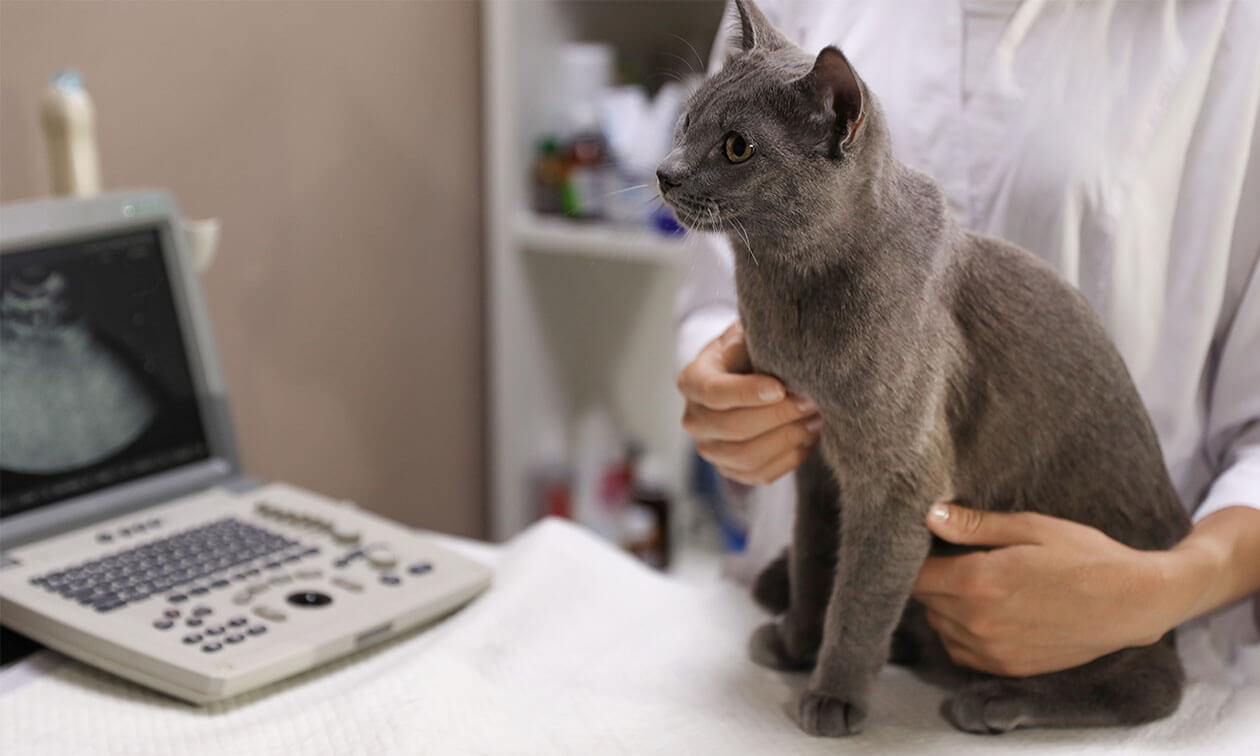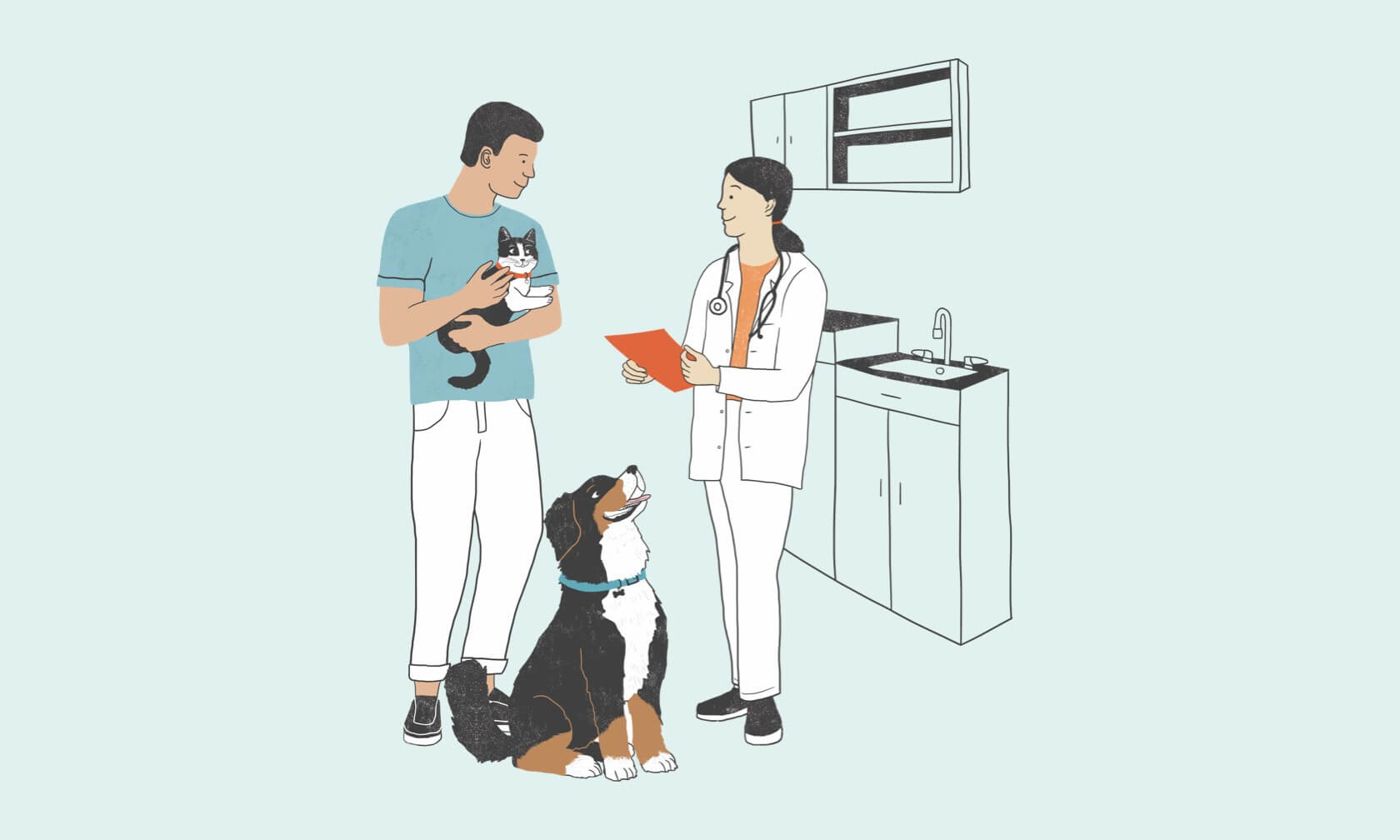You should be aware of this life-threatening issue if you have a cat, since any cat, usually a male, can experience a urinary blockage. Not only can they be extremely painful, but they can be fatal in a matter of a couple of days or even sooner. You need to act quickly if you think there's even the tiniest possibility your cat has a urinary blockage.
Signs Your Cat May Have a Urinary Blockage
The signs of a feline urinary blockage can range from mild to severe depending on the degree of blockage and how long it has been there.
Early signs are similar to those you'd see if your cat had urinary tract inflammation, including:
- Straining to urinate
- Frequent urination
- Blood in urine
- Crying or yowling when peeing due to pain
- Peeing outside the litter box
When cats are completely blocked, they are unable to urinate. Their belly may feel tense or tight due to the enlarged bladder, but be sure not to push on it as you could rupture the bladder. This is a medical emergency and you need to get them to a veterinarian right away.
In addition to the above signs, you'll notice the following:
- A change in appetite
- Restlessness
- Hiding and avoiding family interaction
- Vomiting
- Aggression when approached due to pain
- Lethargy
- Collapse
Death can occur in even a day with a complete blockage due to severe electrolyte and acid-base imbalances or bladder rupture. If the urinary blockage is detected early, the survival rate is 90%1. Obstructions that are missed or not treated quickly can be fatal in a surprisingly short time.
Causes of Urinary Blockage in Cats
Cats can be affected at any age, but it's most common in cats between one and 10 years old.
There are several causes of urinary obstructions in cats which can include:
- Swelling due to inflammation of the lower urinary tract, often caused by Feline Lower Urinary Tract Disease (FLUTD) or Feline Idiopathic Cystitis (FIC) which can be exacerbated by stress
- Urethral plug, usually combining mucus, inflammatory material, and crystals
- Urinary stones
- Cancer
- Prior injury resulting in scarring and narrowing of the urethra
- Trauma
- Urethral spasms that restrict or prevent the flow of urine
In general, urinary blockages account for approximately 1.5% to 9% of all visits to small animal emergency hospitals1. Interestingly, during the winter months, there appear to be more2. The chances of a repeat blockage following treatment ranges from 11% to 43%1.
Cats Who Are More Likely to Have a Urinary Blockage
Male cats are more likely than females to suffer from a urinary blockage because they have a long, narrow urethra.
Other factors that appear to increase the risk of urinary blockage in cats include:
- High-stress situations like cats in the home not getting along, a move, or other changes in the home
- Being overweight
- Not drinking enough water and/or eating food high in certain mineral content A tendency toward general stress/anxiety or fear
Treatment Options for Feline Urinary Blockage
Call your veterinarian or emergency veterinary clinic immediately if you have even the slightest concern that your cat may have a urinary blockage. Emergency treatment is essential. Urinary toxins build up in the cat's system if the blockage persists for more than 24 hours.
Based on the exam and diagnostic tests, your veterinarian will determine what needs to be done and how quickly. This includes intravenous fluids and medications to help with pain and correct metabolic abnormalities, like having too much potassium in the blood since it isn't being flushed out in the urine.
As soon as possible, a therapeutic cystocentesis is performed. This procedure involves inserting a needle into the bladder and removing the urine. The benefits of this procedure include the following:
- Rapid decrease in bladder pressure
- Collection of an uncontaminated urine sample for analysis
- Reduction in bladder pressure to aid in placing a urethral catheter
Your cat needs general sedation or anesthesia for a urethral catheter to be placed. The catheter will help flush out the plug or push the stone back into the bladder or allow them to pass urine if inflammation caused the blockage. In some cases, even though the blockage is cleared, they may leave the catheter in for a few days while your cat is hospitalized. Then the catheter is removed, and your cat is monitored to ensure they can urinate easily before they get to go home.
Your cat will be sent home with medications to help with pain, relaxing the urethra, and treating infection if needed. A specialized urinary diet may also be prescribed, and detailed instructions will be provided on caring for and monitoring your cat.
For about two weeks following discharge from the hospital, cats are at risk of re-blocking — so be alert.
Treatment for Urinary Blockages Caused by Urinary Stones
In situations where the blockage results from urinary stones, an additional procedure called a cystotomy is necessary. The bladder is surgically opened so the stones can be removed and the bladder flushed.
When Your Cat's Urinary Blockage Doesn't Respond to Basic Treatment
Generally, most cats can be unblocked successfully with a urethral catheter. However, in rare cases where they can't be unblocked, or treatment isn't working, your cat may need a perineal urethrostomy. This procedure widens the urethra permanently so that crystals, mucus plugs, and small stones can pass out easily. It's meant to decrease the likelihood of re-obstruction.
After the procedure, your cat must wear an Elizabethan collar to prevent self-trauma. Self-trauma can lead to scarring and narrowing of the opening resulting in a reoccurrence of symptoms or blockage. About 25% of cats will develop bacterial urinary tract infections within the first year following a perineal urethrostomy2.
Caring for Your Cat After a Urinary Obstruction
You can make changes at home to reduce stress and lessen the chances of another urinary obstruction. Your veterinarian will make recommendations specific to your cat so be sure to follow their guidance. These include:
- Urinary diet. This is the most common way to help reduce chances of an obstruction recurring. It is important to get your cat on an appropriate urinary diet. Your veterinarian will be able to recommend the correct diet for your cat.
- Trying calming/anti-anxiety products. Use calming treats and pheromone diffusers, or feed a cat food designed for urinary and calming support. Your veterinarian may even recommend medication.
- Adding moisture to the diet. Try canned food instead of dry, and add a little water to dry food.
- Increasing water consumption. Add extra water bowls or use a water fountain. Cat-safe flavor additives can be added to the water in bowls to encourage drinking.
- Keeping up with the litterbox. Shoot for one more litterbox than the number of cats and scoop twice daily.
- Adding environmental enrichment. Keep your cat active and engaged with regular play sessions, food puzzles, clicker training, vertical space like a cat tree, and other forms of enrichment to reduce stress.
- Playing the right way. Incorporate wand toy play sessions daily where your cat gets to "hunt" the lure as you move it around, recreating what prey would do and greatly lowering stress.
ZPC-02541
- Feline Urethral Obstruction. Today’s Veterinary Practice. https://todaysveterinarypractice.com/urology-renal-medicine/feline-urethral-obstruction-diagnosis-management/. Accessed November 12, 2022.
- Urinary Obstruction in Male Cats. American College of Veterinary Surgeons. https://www.acvs.org/small-animal/urinary-obstruction-cats. Accessed November 12, 2022.



